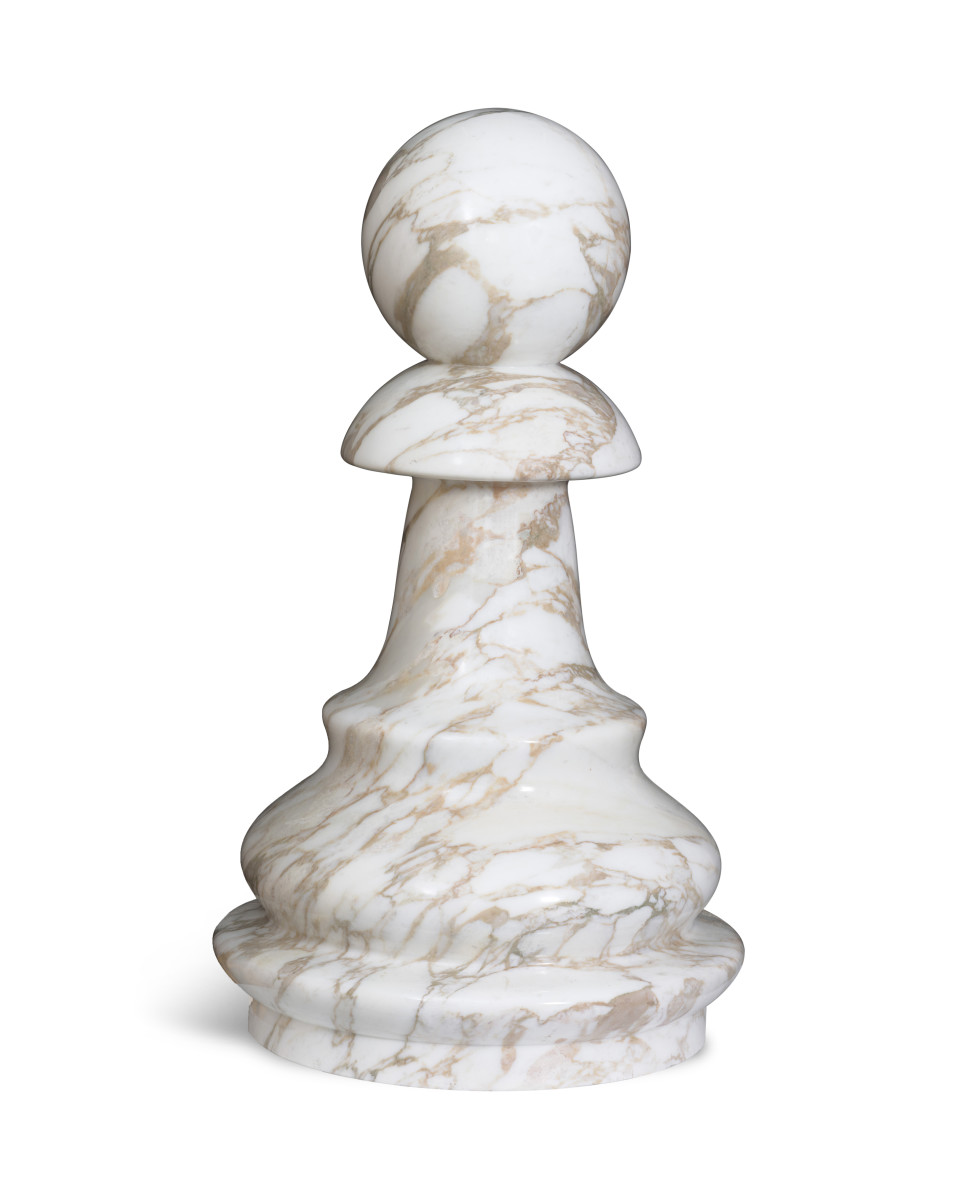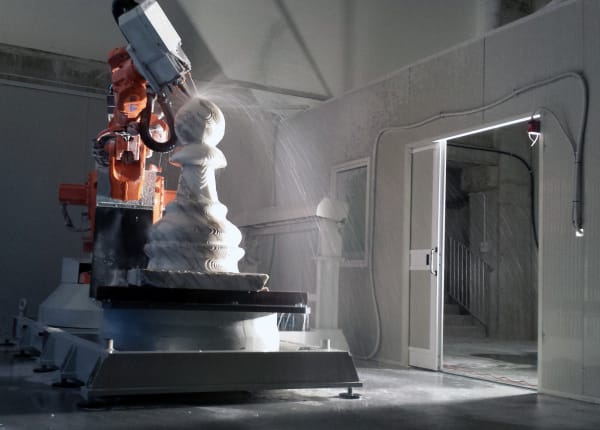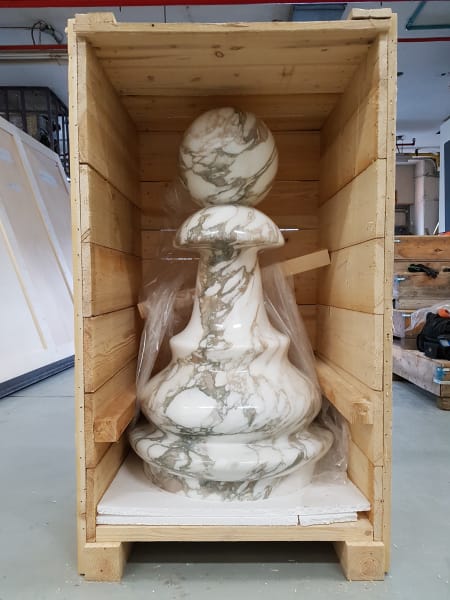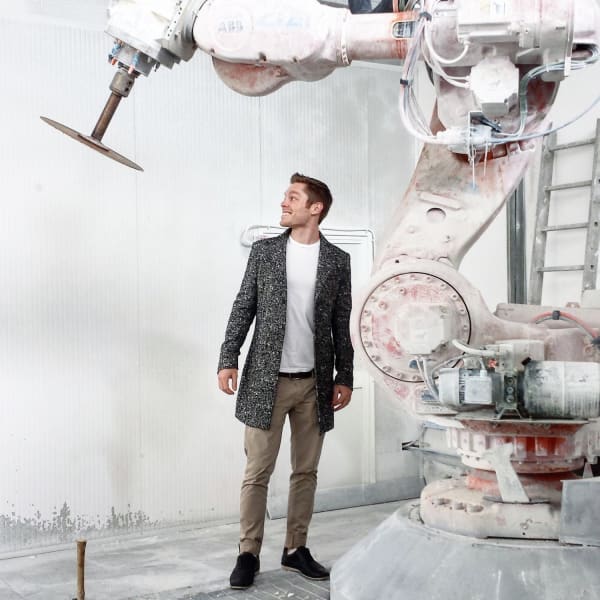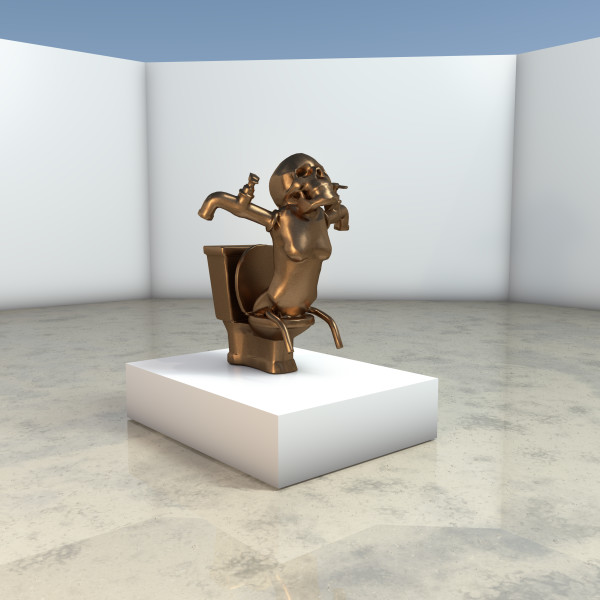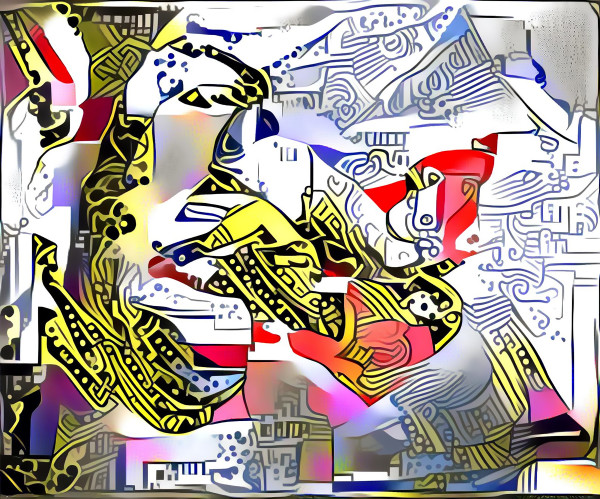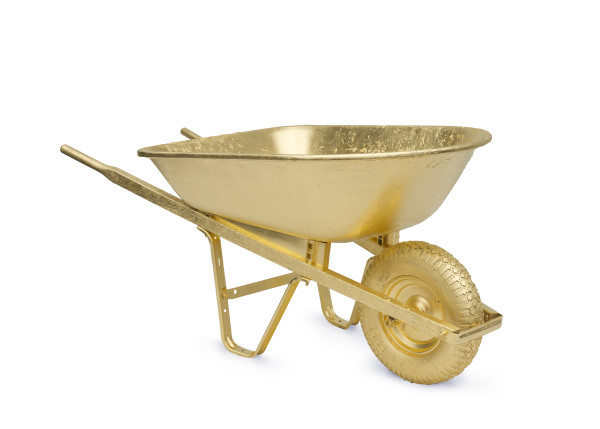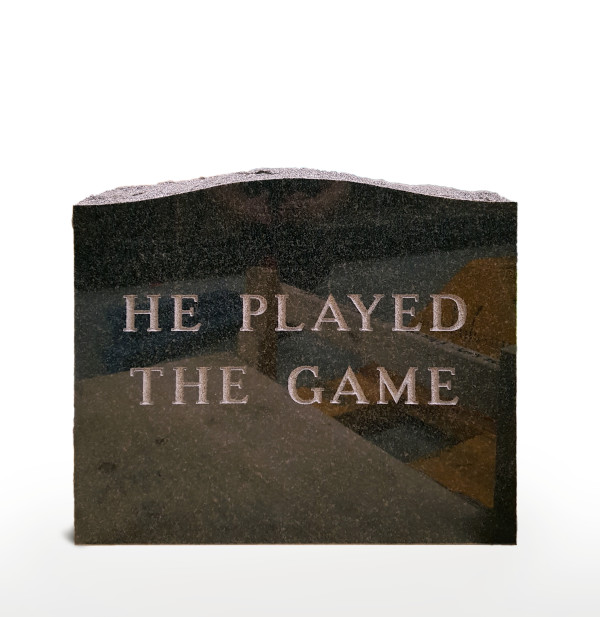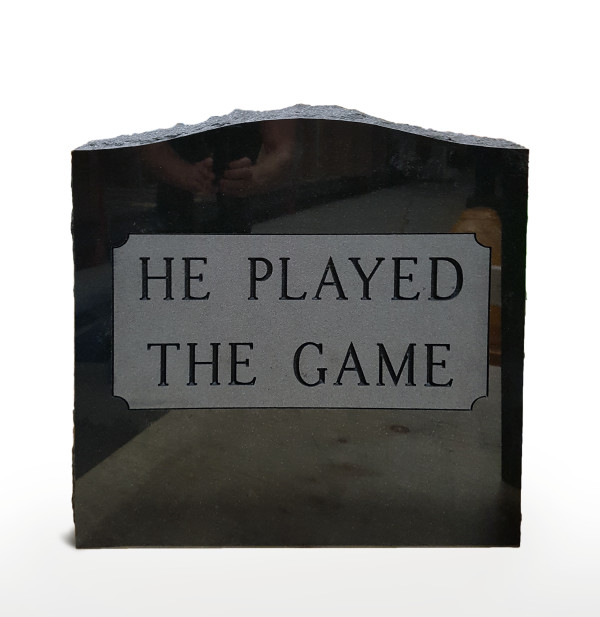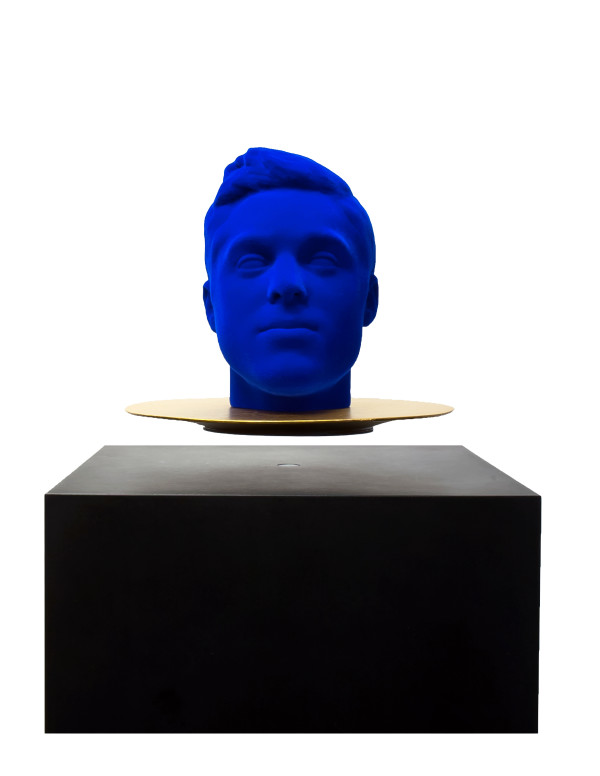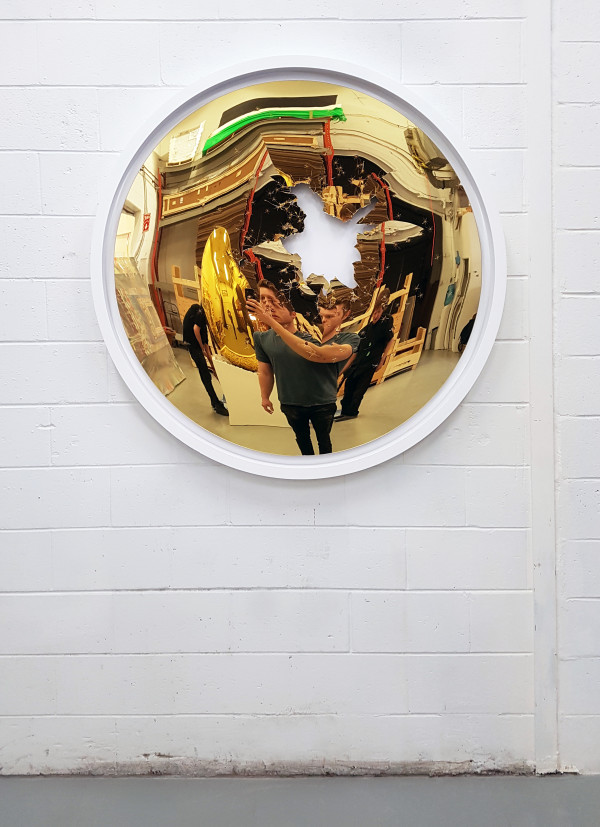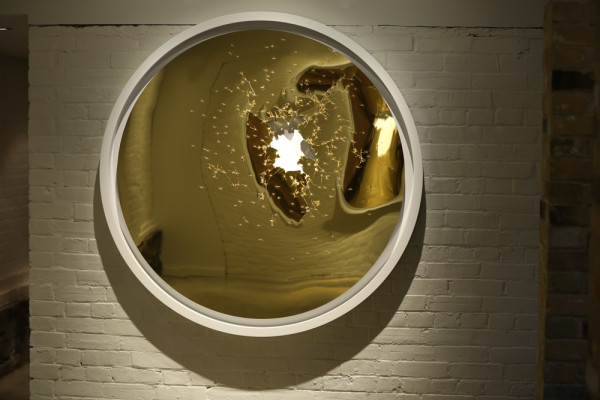- Brendon McNaughton
- Pawn AP, 2017
- Calacatta Vagli Oro, Italian marble.
- 48 x 28 x 28 in (121.92 x 71.12 x 71.12 cm)
- Inv: P.2017.AP1/1
Collector Description
Game Series (2017– )
Brendon McNaughton’s Game Series reimagines the chess set of his childhood as a suite of monumental marble sculptures carved not by hand but by robots. The marble, sourced from the Apuan Alps in Italy, the same mountains where Michelangelo and the Renaissance masters obtained their stone, anchors the works within a centuries-old lineage of craft. Where those masters shaped marble with hammer and chisel, McNaughton employs robotic carving systems guided by digital models.
This disruption of tradition mirrors wider histories of production. From the Renaissance atelier, to Warhol’s Factory, to Jeff Koons’s systemized studio that echoed the division of labor in modern industry, the artist’s studio has long reflected the structures of its time. McNaughton extends this trajectory into the present with a post-human automated studio that parallels today’s fully mechanized production lines. Each piece, from pawn to king, becomes a sculptural allegory of technology, power, and human agency in an era of accelerating automation.
Catalogue Description
Game Series (2017– )
Brendon McNaughton’s Game Series is a cycle of monumental marble sculptures that explores the intersections of tradition, technology, and power. Each piece—the pawn, rook, bishop, knight, queen, and king—is robotically carved from marble, transforming the familiar chess set of the artist’s childhood into a stage for humanity’s encounter with artificial intelligence and automation.
The marble is sourced from the Apuan Alps in Italy, the same quarries that supplied Michelangelo and the Renaissance masters. For centuries, this stone was shaped by hammer and chisel in ateliers where knowledge was transmitted through generations. Marble carving embodied continuity, discipline, and the endurance of human craft. McNaughton’s choice to employ robotic carving interrupts this lineage. Where once human touch and accumulated knowledge were paramount, machines now execute the work with tireless precision. This is not only a technical innovation but a philosophical rupture, raising questions about the role of human beings in a world where machines increasingly outperform us in both physical and cognitive domains.
The Game Series mirrors the broader trajectory of artistic production and its parallel in industrial history. The Renaissance atelier, grounded in apprenticeship and manual skill, evolved into Andy Warhol’s Factory, which embraced industrial processes and mechanized repetition. Jeff Koons advanced this model further, constructing a studio that operated with the efficiency of a corporate workshop, where teams of assistants enacted systemized human behavior in a division of labor reminiscent of twentieth-century industry. McNaughton extends this lineage into the present with a post-human, automated studio in which robotic carving arms and algorithmic control displace human assistants entirely. This transformation within the artistic field parallels shifts in industry at large. Where once assembly lines relied on coordinated human labor, industries such as automobile manufacturing have moved to fully automated production systems. The Game Series therefore reflects not only the evolution of the artist’s studio but also the mechanization and automation of society as a whole.
Chess provides the conceptual structure. Long understood as a metaphor for strategy and foresight, the game acquired new significance in 1997 when IBM’s Deep Blue defeated Garry Kasparov, marking a turning point in the relationship between human and machine. By monumentalizing the chess set in marble, McNaughton renders this shift in sculptural form. Each piece embodies roles, strategies, and hierarchies within a contest. The pawn serves as the entry point, modest and numerous, yet capable of transformation into a queen, recalling incremental technological advances that accumulate into systemic transformation. The rook, with its solidity and verticality, evokes fortification and institutional strength. The knight, with its distinctive movement, suggests agility and asymmetry, the disruptive force that unsettles established orders. The bishop speaks to ideology and vision, its diagonal path cutting across structures of power. The queen, the most versatile and expansive piece, embodies unprecedented capacity and reach, recalling the accelerating force of artificial intelligence. The king, the largest and most monumental, signifies both ultimate authority and profound fragility, since the fall of the king brings the game to its end.
Together these sculptures present a hierarchy that mirrors social, political, and technological orders. Their robotic execution underscores the paradox of the present: marble, long the epitome of human mastery, is now shaped by machines. The Game Series unites Renaissance traditions, Pop Art’s industrial logic, and the realities of contemporary automation into a single sculptural narrative. By linking the history of the artistic studio with the evolution of industrial labor, McNaughton compels us to confront the transformations reshaping human life. The series asks whether humanity remains the strategist of history or whether we have already become its pieces, moved within a system of our own design.
- Subject Matter: Pawn
Other Work From Brendon McNaughton
All works protected under copyright. © Brendon McNaughton – The Asset Artist
